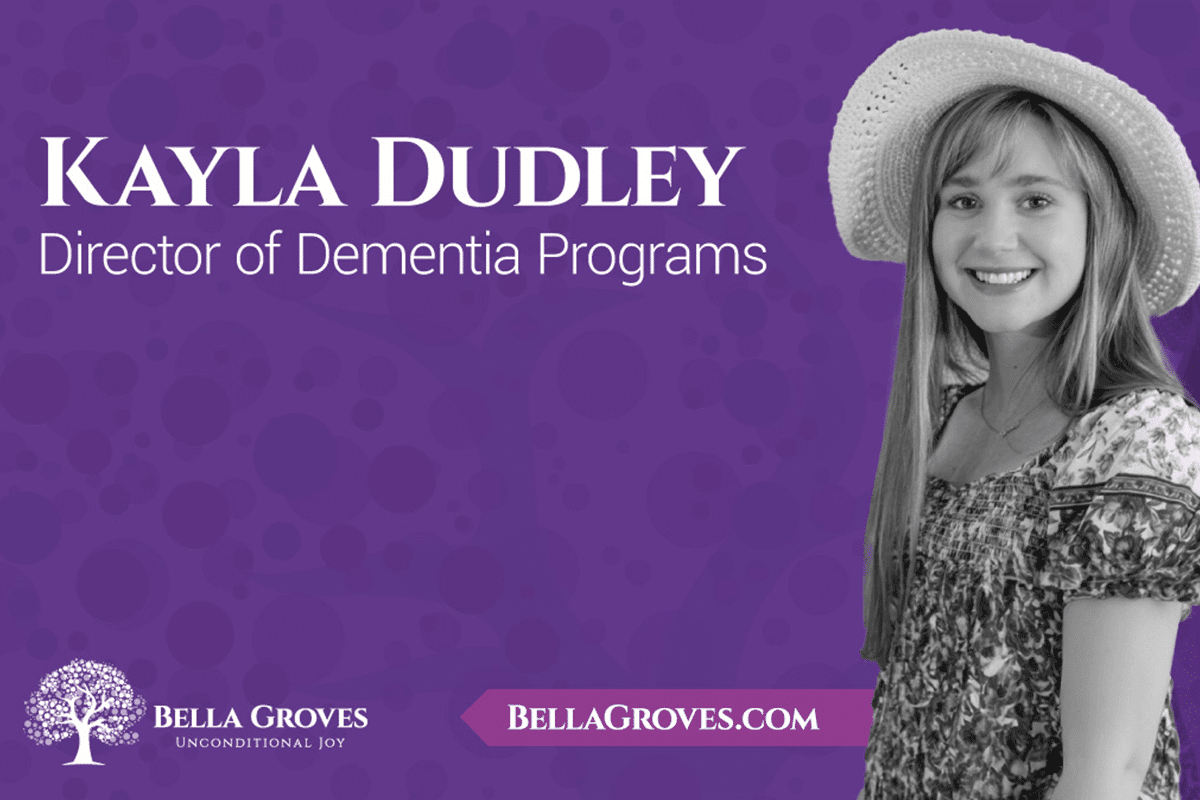
Is it Time for Community Placement?
Written By: Kayla Dudley
As the Director of Dementia Programming and Education at Bella Groves, I get the opportunity to regularly speak to families navigating various stages of a loved one’s dementia diagnosis. These stages vary from “Mom’s display of independence masks her need for assistance” to “Mom is at the point where she is incontinent, attempting to leave the house all day, and her neighbors are finding her down the street.”
Both of these situations are equally as difficult to maneuver for families who are going through the emotional toll and uncertainty that accompanies disease. While the first family may be conflicted about whether it’s the right time to move their loved one into a community, the second one is emotionally depleted and – for the sake of their own sanity and well-being – has no other option at this point other than seeking outside help. In Bella Groves’ monthly dementia support group, one wife reflected on what life looked like when she was caring for her husband at home. “I just didn’t have the energy… I was just existing,” she stated.
So, when is the right time for community placement?
While I can’t give a definitive answer on this, I can share what I’ve seen as someone who regularly speaks to families on the other side of this decision.
More often than not, family members of individuals who are living with dementia go through a series of stages throughout the disease process. One of these stages includes what one may call “winging it.” Their loved one is often given a diagnosis of “dementia” or “cognitive impairment,” with no real detail about what this entails and no training on what to expect as the disease progresses. They do their best with the minimal information they have been given. As a result, they end up struggling to understand why “Dad is not who he used to be” and refuse to surrender to this invisible force that seems to be taking their loved one away from them. They yearn to bring back the person they have known and loved their whole lives, but their very attempt to do so only makes matters worse. There is a sort of self-sustaining denial that takes place, fueled by a lack of education about how dementia affects the human brain.
I regularly sit across from family members who are living in this purgatory of indecision when it comes to whether or not it’s time to move their loved one into a community setting. I’m going to give you a couple of scenarios below as well as how community placement positively impacted each one.
Scenario #1
In the first scenario, a woman’s husband has developed dementia early in his life, and she feels like she is giving up on him by asking for outside help. There is a sort of grief that occurs when a spouse has to say goodbye to shared dreams she has with the love of her life who is now living with dementia. Little does the wife know that this suffocated grief is what is impeding her ability to move forward for the sake of her husband and – even more – for herself. It is not until she embraces outside help that she begins to realize just how far she has gotten from who she is in the process of trying to save him. Her cup is empty. She may be thinking thoughts such as, “He’s too young. This isn’t fair.” She may become exceedingly frustrated with her husband because he’s physically still capable, yet he’s mentally declining. “Maybe he’ll get better,” she thinks, leading to continual arguments between her and her husband, unknowingly damaging their relationship.
It is not until receiving proper dementia education that the wife begins to realize her husband is no longer capable of seeing the world the same way that she does. She begins to try out different skills, realizing that her and her husband’s relationship benefits greatly when she surrenders to his ever-changing actions, words, and thoughts. The wife begins to realize she was never meant to journey through this disease process independently. Upon the transition to community placement, she receives support which she otherwise may not have had access to; she is now in individual counseling as well as attending a monthly support group with many other families whose stories are similar to her own. Upon moving her husband into communal living, he builds lasting relationships with an educated care team and other residents. To her surprise, the wife also grows to love this care team and her husband’s peers. The community becomes a huge beacon of light and hope in this trying season of her life. Yes, the wife is still grieving, but the difference in her quality of life now is drastic:
1) Her confidence is being built as she learns how to approach her husband utilizing dementia training methodology. Their arguing has decreased as a result.
2) She now has time to take care of herself, rest, and be more present when she visits her husband.
3) She now has the chance to be a partner in her husband’s care rather than the one solely responsible for his well-being.
4) Other family members in the community become her close friends and confidants.
Scenario #2
Now, let’s look at scenario two. We may see a daughter whose uncertainty about community placement stems from not knowing whether her mom will relate to the other residents living there. There is this fear that her mother is “less advanced” than others in the community and, therefore, may feel bored, outcast, or abandoned by her family.
We actually have a resident at Bella Groves whose daughter had an experience similar to this one. I remember sitting across from her as she prepared to move her mom into our environment, and it was a very emotional time in her life. She was worried about how she would acclimate to living in a community setting for the first time, especially after being cared for by her and her husband for a period of time.
I am delighted to tell you that her mom is a very happy and content woman to this day. She is the resident at Bella Groves who tells us when a visitor is at the door, helps our staff with community projects, and tells us exactly how she feels about the food. She is very involved in our community outings. One may even call her an “advocate” or a “resident leader.” Additionally, the very thing that her daughter feared actually worked to fuel her mother’s sense of purpose: Her mom takes care of those who are “more advanced” in their dementia progression. She gets our attention when another resident needs assistance. Most of all, she has befriended another resident who always used to sit by herself, and she even came up with a nickname for her. Now, there are two of them sitting at the front window; best friends enjoying the hill country and alerting us when there are community visitors. This story is not uncommon to those we see daily. At Bella Groves, we have found that moving a person living with dementia into a community setting early on in the progression of the disease can actually enhance their ability to form friendships as well as build trust and familiarity with others.
Yes, the daughter in this case scenario is still grieving in her own way, but the difference in her quality of life is drastic:
1) She has expressed to us that “It helps her and her husband so much to see Mom so happy and adjusted. Hopefully, she can help others settle in and adjust as well.”
2) Unlike having mom at home, she no longer has to worry about her socialization. Now, mom is constantly exposed to people her age, with the autonomy to retreat to her room when she needs alone time.
3) She no longer has to be the only one planning and facilitating outings for Mom. These days, she tags along on Bella Groves’ outings, fostering Mom’s camaraderie with her peers as they share life experiences together. She also gets to make memories with Mom without the stress of being the only one responsible for her quality of life and well-being.
4) She now supports and encourages other families who are considering community placement.
You Are Not Alone
If you are reading this blog, you likely have a loved one living with dementia or know someone who does. While no one can tell you when the time is right for community placement, we at Bella Groves can offer our perspective on the positive experiences of our families and provide encouragement in your decision to make the transition. Every single person’s dementia diagnosis is unique and, therefore, affects them differently, but the approach we take on how to care for a person living with dementia is universal: our Go With the Flow methodology.
Regardless of the situation, there is almost always guilt associated with the decision to move a person living with dementia into a community setting. We help families impacted by dementia find unconditional joy. Please reach out to us for more tips and support as you decide whether to move your loved one to a memory care community. We would be honored to help you.


